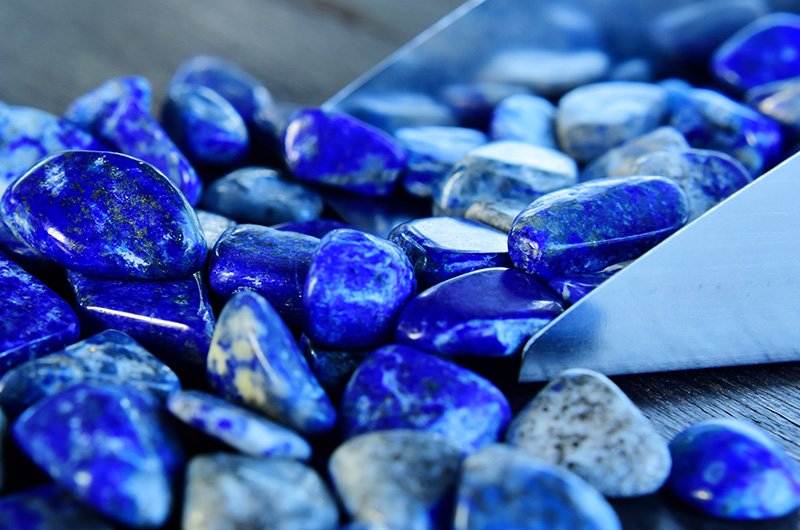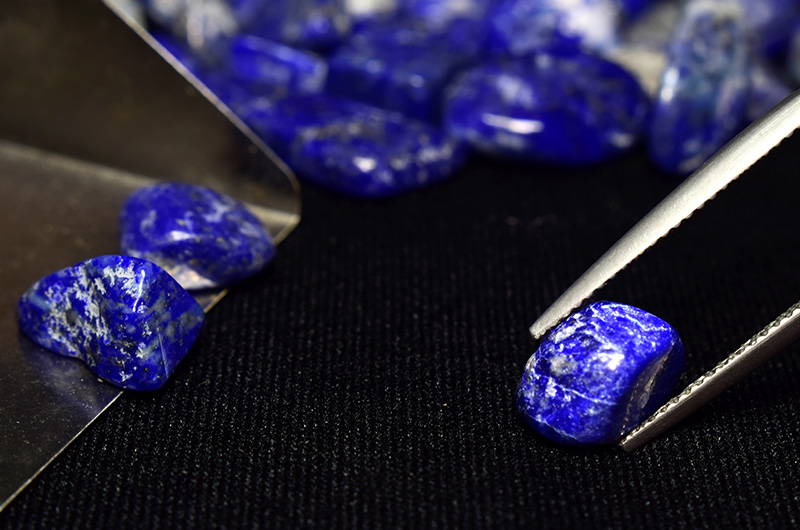You've added...
The Lapis lazuli

What is lapis lazuli?
Lazuli, also known as “lapis” or “lapis lazuli,” is a blue metamorphic rock used for thousands of years as a gemstone, a healing stone, a sculpting material, a pigment, and a decorative material. High-quality lapis lazuli can be an expensive gemstone. The most desirable specimens have a brilliant blue color, sometimes accented with small, reflective pieces of golden pyrite.
>Unlike most other gemstones and semi-precious stones, lapis lazuli is not a mineral. Rather, it is a rock composed of multiple minerals. The intense blue color of lazuli primarily comes from the presence of lazurite, a blue silicate mineral from the sodalite group.
Read more
Lapis Lazuli Throughout History
Lapis lazuli appears at numerous Egyptian archaeological sites dating back to around 3000 B.C. It was used in various decorative objects and jewelry. Lapis lazuli powder was also used as a cosmetic and pigment. In biblical times, the word “sapphire” was often used to refer to lazuli. For this reason, many scholars believe that at least some references to sapphire in the Bible actually refer to this mysterious stone. In fact, some modern translations of the Bible use the word “lapis” instead of “sapphire.”
Lapis lazuli began to be seen in Europe during the Middle Ages, arriving as jewelry, carving blanks, and finely ground pigments. Today, lazuli is still used in jewelry design and ornamental objects. As a pigment, it has been replaced by modern materials, except among artists dedicated to using historical methods.
Fun Facts About Lapis Lazuli
- One of the first eyeshadows was made from crushed lazuli mixed with oil. This created a blue paste that women used as eyeshadow.
- The painter Vermeer used lapis lazuli for his famous ultramarine paintings.
- In ancient Egypt, pharaohs wore lazuli pendants representing the goddess of truth.
- Lapis lazuli ornaments found in a tomb in the Indus Valley were dated to 9,000 years ago, showing that lazuli’s ornamental value has been known for millennia.
- By the end of the Middle Ages, lazuli began to be exported to Europe, where it was ground into powder and turned into ultramarine, the finest and most expensive of all pigments.
- The famous Michelangelo used lapis lazuli powder to paint the Sistine Chapel.
- This stone was commonly used in ancient Egypt for healing and meditation.
- Lapis lazuli is an alternative birthstone for December, alongside turquoise and ruby.
- The term “lapis lazuli” comes from the Latin “lapis,” meaning stone, and “lazuli” from an old Arabic word, “allazjward,” meaning sky, heaven, or simply blue.
The Spiritual Meaning of the Stone
During meditation, Reiki, or energy healing, you can use a lazuli stone to protect yourself from unwanted energies. It is also believed to encourage peaceful rest. To benefit from its effects during sleep, take a lazuli stone, set your intentions, and place it under your pillow.
Referring to its history alone, it is evident that lazuli is undeniably a royal stone with multiple benefits for mental and spiritual health. Lazuli is also one of the most widely used ornamental stones, dating back at least 9,000 years. If you are interested in lazuli, whether for its healing powers or its ornamental beauty, then explore what Kalinas Perles offers in-store!

